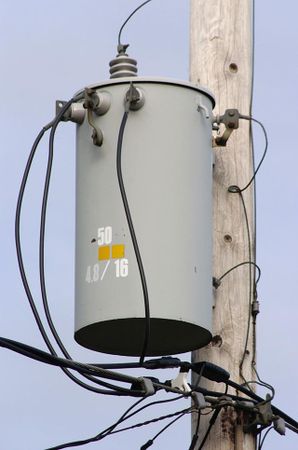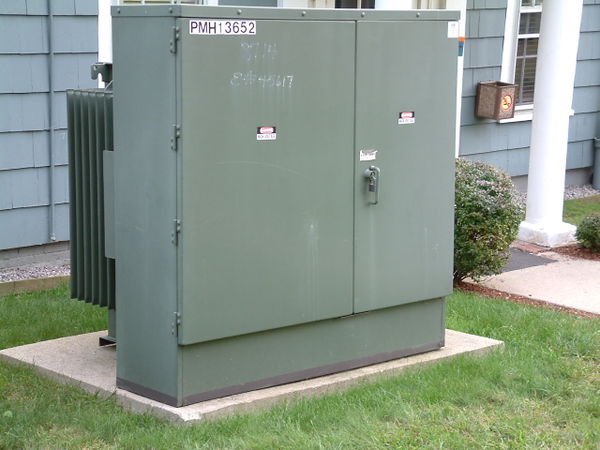Distribution transformer
A distribution transformer is the type of transformer that performs the last voltage transformation in a distribution grid. It converts the voltage used in the transmission lines to one suitable for household and commercial use, typically down to 240 volts.[1] These transformers are pole-mounted if the transmission lines run above ground (see figure 1), and they are pad-mounted (see figure 2) if the transmission lines lie underground, as is the case in many suburban areas. The pad-mounted transformer is usually green and visible on the front lawns of many homes.
- Two types of Transformers
Figure 2. A pad mounted transformer box[2]
Connections
Every utility pole has a grounding wire. There is also a grounding wire that accompanies the two 120 volt hot wires that come from the transformer. These two 120 volt wires are 180° out of phase so that if both electric currents are used, there is a combined voltage of 240 volts. This allows for both 120-volt and 240-volt devices to be powered by the same distribution grid.[1]
For Further Reading
For further information please see the related pages below:
- Current transformer
- Transformer
- Electrical grid
- Distribution grid
- Connecting homes to the electrical grid
- Or explore a random page!
References
- ↑ 1.0 1.1 How Power Grids Work [Online]. Available: http://science.howstuffworks.com/environmental/energy/power9.htm
- ↑ http://www.zeppaenterprises.com/electric.html



